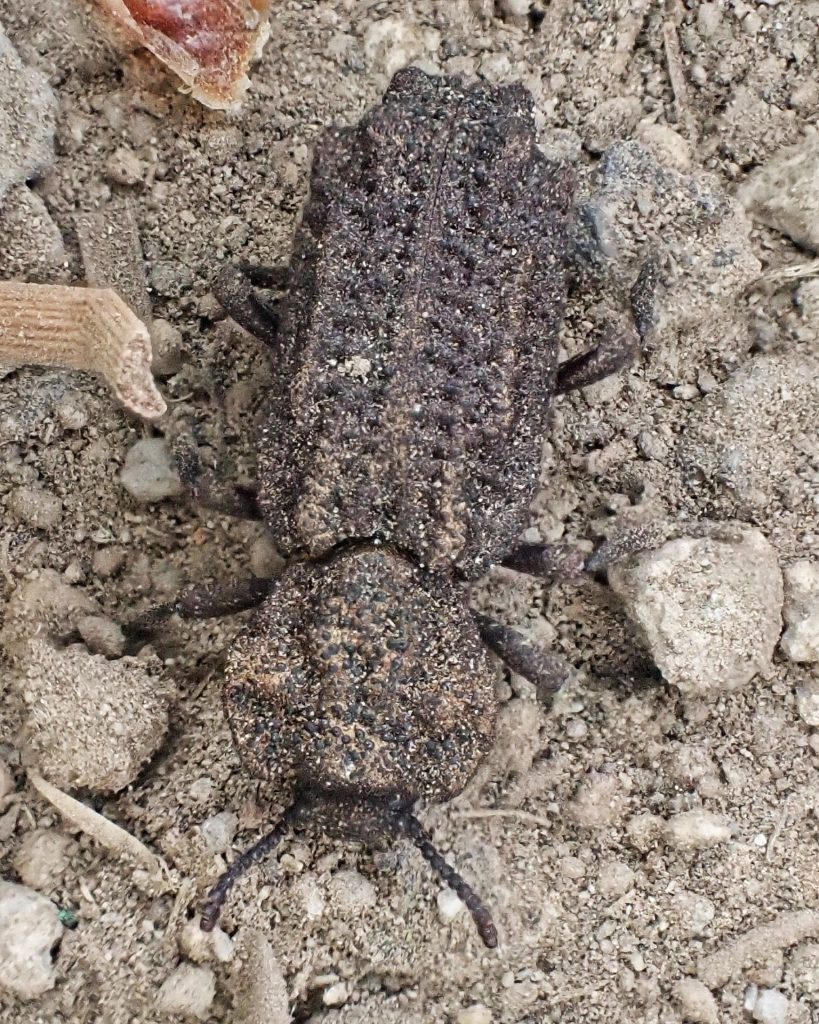
As I mentioned in A Trip to Mt. Adams, I found this cool looking and interesting beetle in the family Zopheridae crawling (the beetle, not me) along the road I was traversing between my Temples of Ultraviolet Light. Only because I was really searching for beetles did I see it, because it was barely a half inch long, and (as the generic name Phellopsis would suggest) it really did resemble a bit of bark. Collectively the members of the subfamily Zopherinae, of which Phellopsis porcata is a part, are known as the ironclad beetles, because they have one of the hardest known exoskeletons within the invertebrate world. And like most of the ironclad beetles, the adults and larvae feed on fungus.
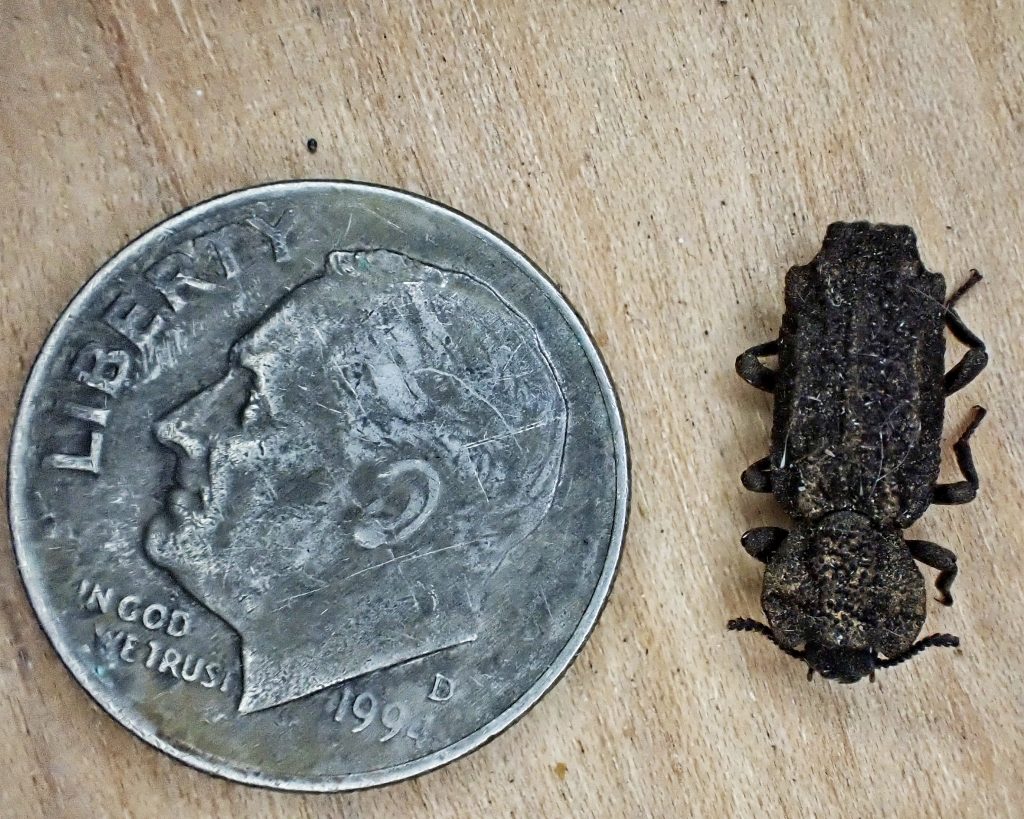
And it did try to play dead, as Foley/Ivie, 2008 note- “Adults use thanatosis (death feigning) as a predator avoidance mechanism, a behavior that has been documented in several groups of beetles (Chemsak and Linsley 1970, Allen 1990, Oliver 1996, Miyatake 2001, and Miyatake et al. 2004) and specifically in the Zopherinae (Evans and Hogue 2004). When disturbed, adults drop to the ground with appendages retracted, and remain motionless for a significant time period (pers. obs., Steiner 1992). Their rough bodies blend perfectly with bark chips and detritus at the base of trees or litter on the ground, making a good search image critical to collecting species of this group.” https://www.biotaxa.org/Zootaxa/article/download/zootaxa.1689.1.1/44778 . However this strategy is not as effective on a dusty dirt road, though they are still not apparent as a living creature.
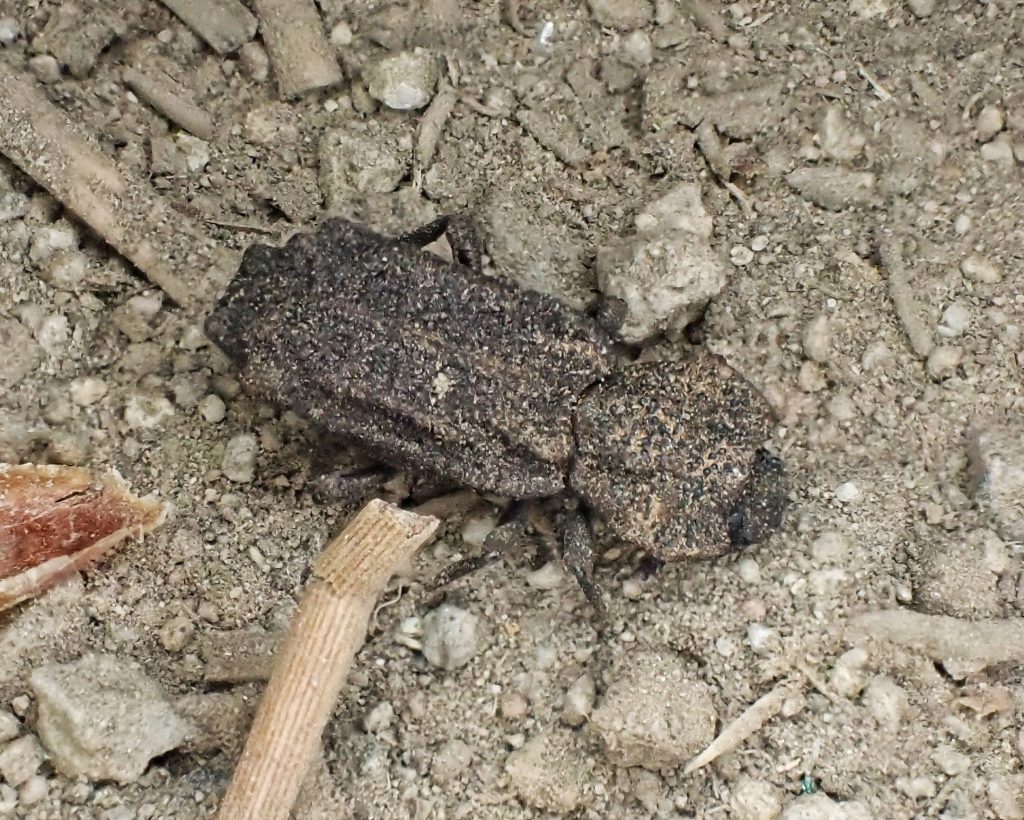
Description– “10-16mm…dark brown, quite roughly sculpted body; pronotum has raised, hourglass shaped area in middle; elytra with long, rough ridges, two of which have raised bumps near tips of elytra.” Merrill Peterson, 2018; “Pacific Northwest Insects”.
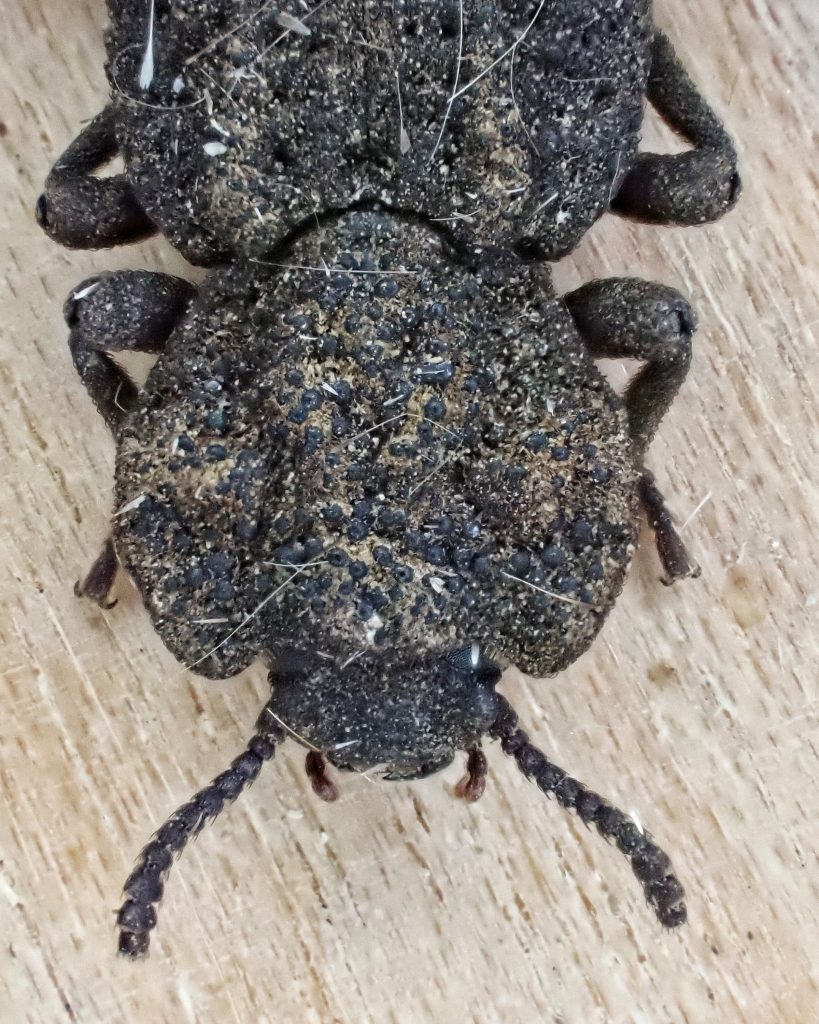
Similar species– Namunaria pacifica have a pattern of light colored hair in lines and spots. “The genus Phellopsis is similar to the genera Sesaspis, Phloeodes, and Zopherus, but can immediately be distinguished by the 11-segmented antennae with a 3-segmented club, narrowly open procoxal cavities, hypomeron with lack of depression/antennal cavity, and a small but visible scutellum [on the Phellopsis].” Ironclad ID: Tool for Diagnosing Ironclad and Cylindrical Bark Beetles (Coleoptera: Zopheridae) of North America north of Mexico
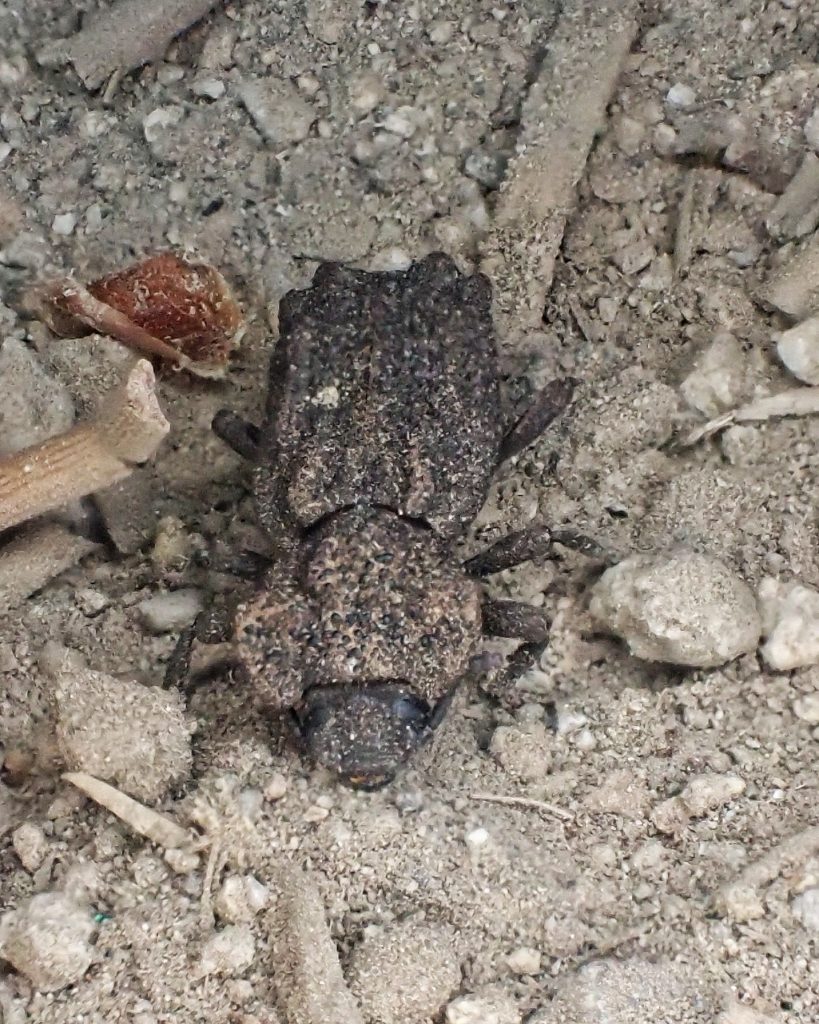
Habitat– Forested areas
Range– “California, Nevada, Alaska, Idaho, Montana, Oregon, Washington, USA; Alberta, British Columbia, Canada.” Phellopsis porcata (Phellopsis porcata) – JungleDragon; found region wide in appropriate habitat in the PNW.
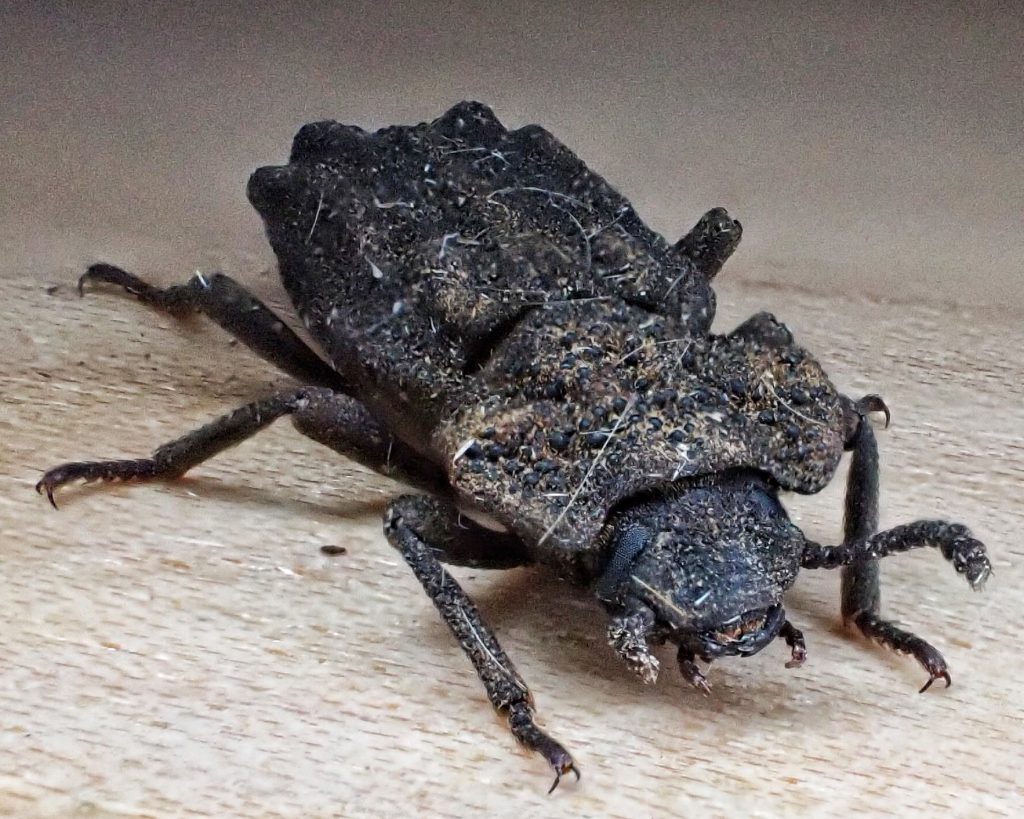
Eats– “Adults and larvae both feed on fungi associated with decaying trees in old growth boreal forests (Steiner 1992, Ivie 2002). Adults are surface feeders, while larvae burrow into the substrate…Phellopsis porcata adults have been associated with fungi on western hemlock (Tsuga heterophylla (Raf.) Sarg.) on Vancouver Island (Guppy 1951) and on Lentinus fungus in Montana (Russell 1968)…In Western North America, the larvae of P. porcata bore through soft wood, where they feed on white sheet fungi between the laminae of large rotting spruce (Picea sp.) stumps (Ivie 2002).” https://www.biotaxa.org/Zootaxa/article/download/zootaxa.1689.1.1/44778 ; also known from fungi associated with Doug-fir and other conifers.
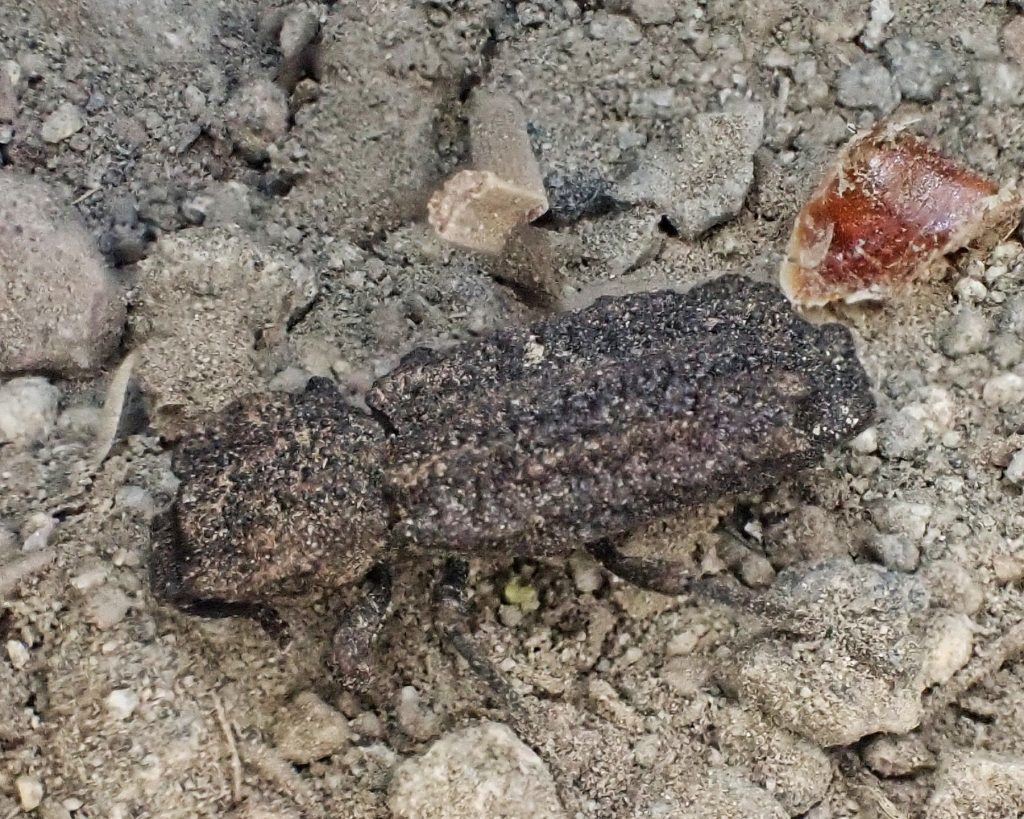
Eaten by– Presumably a host for parasitoids in Hymenoptera and Diptera, and probably preyed upon by insectivores of all classes, but I can find nothing specific for this species.
Life cycle– Beyond what I’ve already mentioned, I can find no information on the reproductive habits or life history of this species.
Adults active– March into October
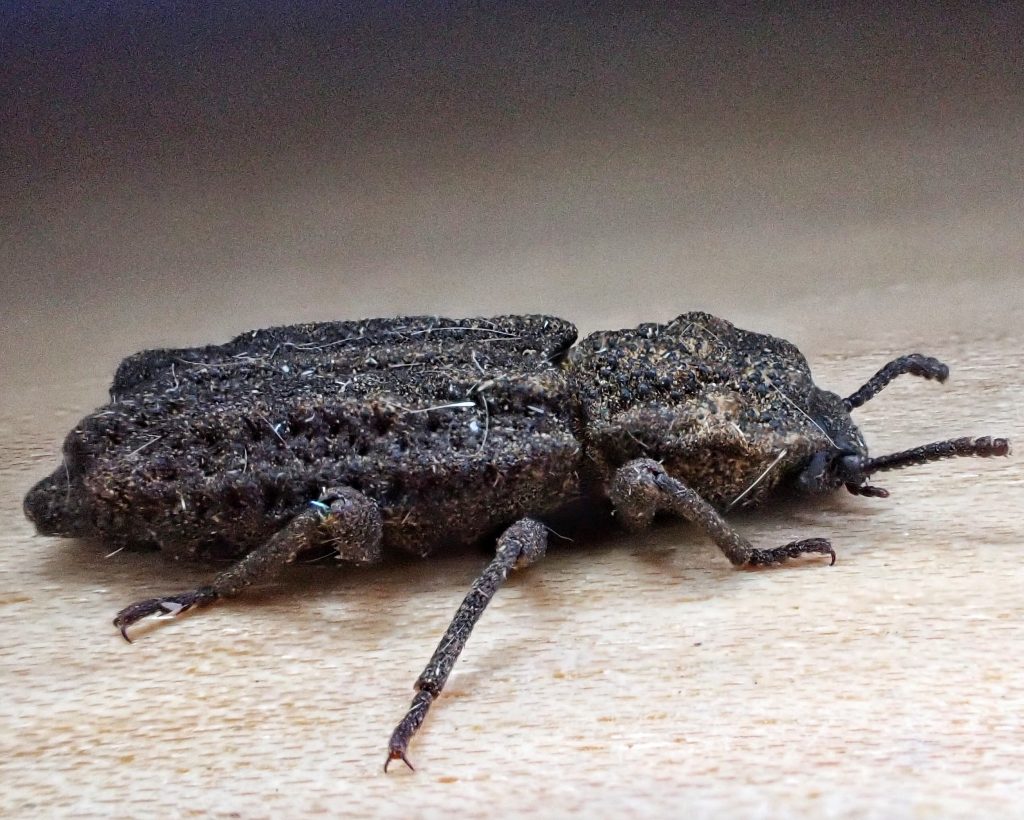
Etymology of names– Phellopsis is from the Greek word for the cork tree, and refers to these beetle looking like the bark of that tree. The specific epithet porcata is from the Latin word for ‘the ridge between furrows’, and presumably refers to the sculpturing on the elytra of this beetle.
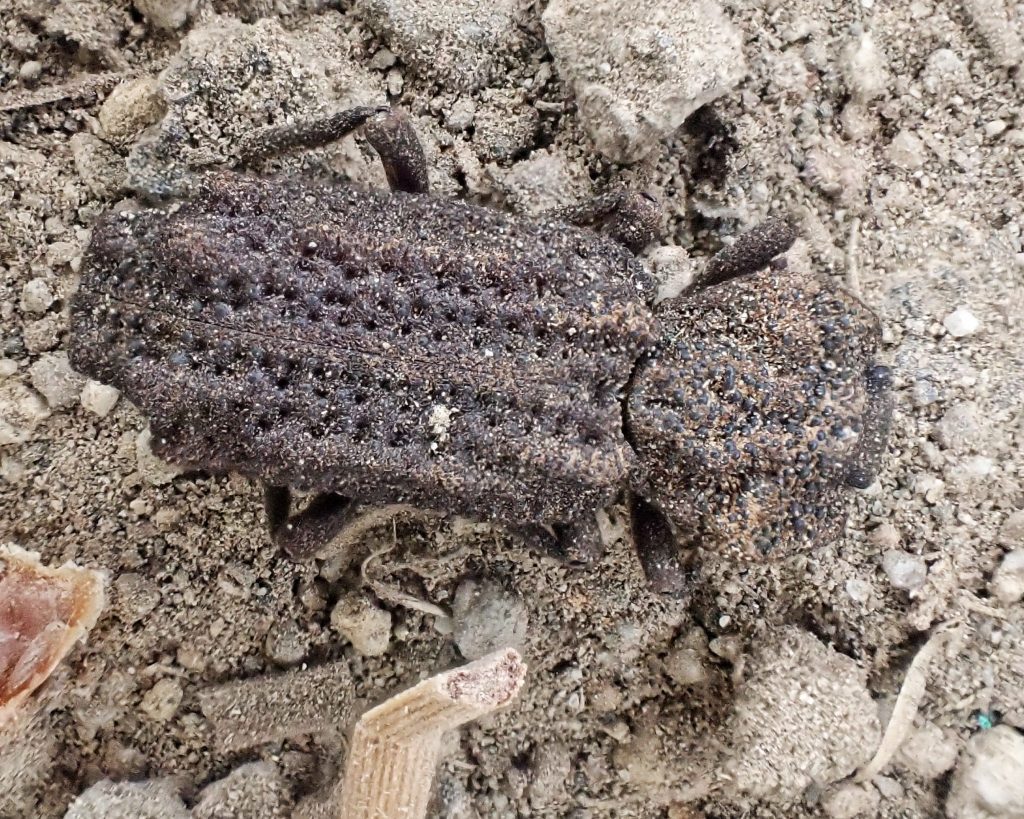
Species Phellopsis porcata – BugGuide.Net
https://www.biotaxa.org/Zootaxa/article/download/zootaxa.1689.1.1/44778
Phellopsis porcata (Phellopsis porcata) – JungleDragon
Sci-Hub | Habitat of Phellopsis porcata LeC | 10.2307/3998631
Phellopsis porcata (ironclad beetles) | Project Noah
https://en.wikipedia.org/wiki/Phellopsis_porcata
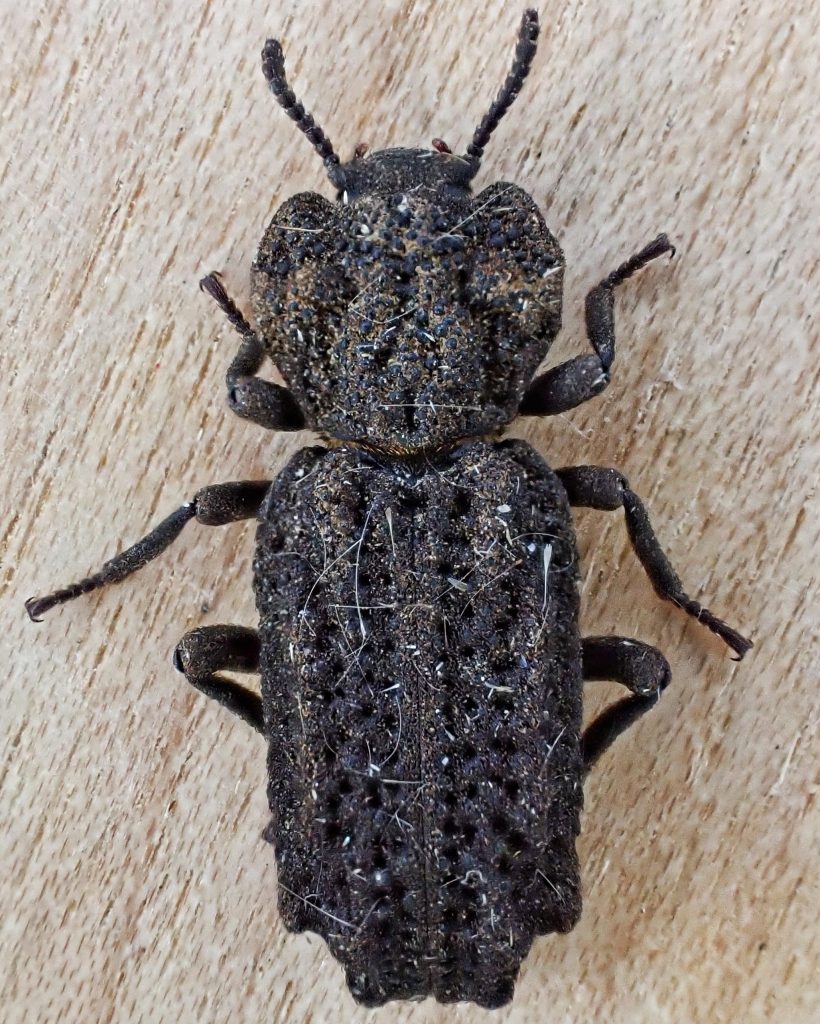
I first encountered this species (near Vancouver BC) with a rear view, and it looked stunningly like a frog. So much so that I wondered if that was a third line of defense, after thanatosis (great word) and ironcladness.
Now that you mention that, David, I can see it! Cool!
These guys are so cool, and now I know why I’ve never seen one healthily alive. They’ve all been at least half-dead, if not fully dead-dead.
D’oh! Now I get it!
I’m thinking of using this strategy when confronted by people wanting to argue politics and religion😏
Word!